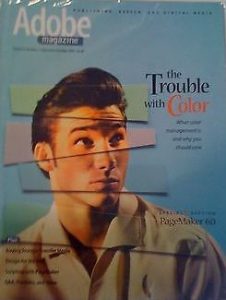
For a few years I wrote PageMaker and Acrobat Q&A sections for Adobe Magazine. This is Acrobat Q&A section I wrote for the September/October 1995 issue.
I wrote the PageMaker Q&A article for the May/June 1995 issue. I’m not sure if this issue, or the July/August 1995 issue which got lost over the past couple decades, contains the first appearance of the Acrobat Q&A section. I’m searching for the missing issue on eBay to find out. For now, this is the earliest Acrobat Q&A article in my nostalgia magazine collection.
A few time-capsule notes:
- This article mentions the soon-to-be released Windows 95.
- Each question usually lists the operating system for which it’s relevant. This issue is the first to add DOS and Unix to the familiar list of Windows (formerly referred to as “PC” in the magazine) and Macintosh.
- There are references to the old AUTOEXEC.BAT and WIN.INI files. I remember gingerly helping customers edit those delicate files on the phone and haven’t seen their names in print in years.
- Going forward from this issue, the Q&A sections are much shorter than they were in previous issues.
The article is scanned into Acrobat and its OCR functionality was used to recognize the text. While OCR is a wonderful invention, the cleanup process (I pasted the content into Word and did it there) is more time consuming than expected. Note that Adobe Magazine didn’t provide bylines for Q&A articles, though the authors are listed as contributors in small print in the credits, as can be seen on the last page of the scanned PDF at the bottom of this post.
Q: I’m trying to install the Acrobat Reader in Windows and keep getting an error message with the number 0003 in it. Why won’t it install? (Windows)
A: You’re probably having this problem because your TEMP directory is invalid or the disk it’s on is full, making it impossible for the Acrobat Reader to store files in this directory during installation.
When you run the installer application for Acrobat Reader for Windows (ACROREAD.EXE), it makes a copy of the ACROREAD.EXE file in your TEMP directory, which is usually defined in the AUTOEXEC.BAT file’s “SET TEMP=” line. When the directory listed in that line doesn’t really exist, or you don’t have write access to that directory, or that directory’s drive doesn’t have enough free space, the Acrobat Reader installation fails and returns the error “Error *** 0003 ***.”
To prevent this, there are a few things you should do. First, ensure there is at least 4-8 MB of free disk space on the hard drive on which you’re installing Acrobat Reader, as well as the hard drive that contains your TEMP directory.
Next, check to see that the “SET TEMP=” line in your AUTOEXEC.BAT file points to a directory that actually exists. If it points to an invalid directory, make a backup copy of your AUTOEXEC.BAT file, then edit the line to point to a different directory—any one will do, as long as that directory really exists, isn’t your root directory, and is on a hard drive that you have write access to and has at least 4-8 MB of free space. Furthermore, we recommend designating a directory that will be used only for TEMP files (for instance, C:\TEMP), not a directory you use to store other items. (If you need to create a new directory for this purpose, you can use the Windows File Manager or DOS commands to do so.) When you’re done, save your AUTOEXEC.BAT file in text-only format, restart your computer, and try installing the Acrobat Reader again.
One more note: if you’ve been operating with an invalid TEMP directory, you probably have a few TEMP files (named with .TMP extensions) cluttering up your hard drive. Unless one of those TEMP files might contain valuable data, which is only likely if you’ve lost an entire document due to a system crash, you can delete them. To do so, exit Windows completely first (this is extremely important, because you should never delete TEMP files while Windows is running—you might delete one Windows is in the process of using). Then, use DOS commands to delete the files.
Q: What are the advantages of embedding fonts into a PDF file, and how do I do it? (Windows/Mac)
A: Acrobat can embed PostScript Type 1, multiple master, and TrueType fonts (Acrobat embeds TrueType fonts and each instance of a multiple master font as individual Type 1 fonts). When you embed fonts into a PDF file, the Acrobat viewers (Acrobat Reader and Acrobat Exchange) will be able to display and print your PDF file with the exact fonts you used in your design, even if they’re not installed on the computer you’re using to view the PDF.
When you don’t embed a font, Acrobat Reader and Exchange must create—on the fly—a simulation of that font if it isn’t installed on the computer being used to view the PDF file. The Acrobat viewers create these simulated fonts by reading the metrics (exact character spacing values) of your original font, which the Acrobat PDFWriter or Distiller embed in your PDF. Then the Acrobat viewers, in conjunction with ATM (Adobe Type Manager), use the “AdobeSansMM” and “AdobeSerifMM” multiple-master fonts to synthesize a font with the same metrics as your originals.
Embedding fonts in your PDF files ensures that they’ll retain the exact look and fonts of the document from which they were created, but doing so will also increase the size of your PDF files. Not embedding fonts will keep your PDF files relatively small, but they’ll take slightly longer to display on screen, since Acrobat and ATM will need to create on-the-fly simulations of your fonts. And although those simulated fonts will retain your original document’s layout and line endings, they won’t look exactly like the original fonts. Note that by default, both PDFWriter and the Distiller will embed fonts with nonstandard, non-Latin (symbol) character sets—for instance, Zapf Dingbats or the Symbol font—since simulated versions of those fonts won’t match the original fonts’ characters. (Decorative fonts like display or script faces are not automatically embedded.)
You can control which fonts will be embedded in your PDF files by using the font-embedding options in the PDFWriter and in the Distiller. Here’s how.
Getting to font-embedding options with the PDFWriter. How you get to the font-embedding options in the PDFWriter depends on what platform you’re using. In Windows 3.1, go to the Control Panel, click on the “Printers” icon, select the “Acrobat PDFWriter” device, click on the “Setup…” button, then click “Fonts….” In Windows 95, double-click on the “Acrobat PDFWriter” device in the “Printers” Control Panel, and in the “Acrobat PDFWriter” window, select “Properties…” from the Printer menu. In the “Details” section of the next dialog box, click on “Setup…,” then “Fonts…” (at the time of this writing, Windows 95 was not yet released, so this procedure may change).
On the Mac, hold down the Control key while selecting “Print…” from the File menu. In the “Print” dialog box, click on “Setup…,” then “Fonts….” (Note: Some Macintosh applications, such as Adobe Persuasion and Microsoft Word, provide access to printer-setup options via a “Page Setup”·dialog box. In these applications, hold down the Control key while selecting “Page Setup” from the File menu, and in the “Page Setup” dialog box, click on “Fonts….”) If neither of these procedures gets you to the “Acrobat PDFWriter Font Embedding” dialog box, check the “PDFWriter Shortcut” Control Panel to make sure it’s not disabled or set to use another keyboard shortcut. If the “PDFWriter Shortcut” Control Panel isn’t installed, you’ll need to select the “Acrobat PDFWriter” printer driver in the Chooser manually.
Getting to font-embedding options with the Distiller. To open the “Acrobat Distiller – Font Embedding” dialog box, select “Font Embedding…” from the Distiller menu.
Using the font-embedding options. With the options in the “Font Embedding” dialog box, you can control which fonts Acrobat embeds in your PDF files. The manual and help files that come with Acrobat provide comprehensive information on using these features—for details, see the Exchange help file HELP_E.PDF (Windows) or “HelpExchange.pdf” (Mac), pages 138-40; the Distiller help file HELP_D.PDF (Windows) or “Help-Distiller” (Mac), pages 71- 77; or the Getting Started manual, pages 28-32. For technical information on font embedding, refer to FaxYI documents 4406, “How the Adobe Acrobat Distiller and PDFWriter Programs Handle Fonts,” and 4408, “Acrobat Viewer Font Management Tables” (see pages 118-19 in this issue for information on how to use FaxYI).
Acrobat Tip (Windows/Mac/DOS/Unix) – Searchable graphics
Acrobat Exchange and Reader let you search for text, but have no built-in feature that’ll let you search for graphics. But don’t let that stop you—you can create “searchable” graphics as long as you plan ahead.
While you’re in your authoring application (whatever program you used to create the document you’ll convert to PDF), place some descriptive text behind the graphic you want to be searchable. You can usually do this by typing the text, selecting it, and using a “Send to Back” or equivalent command. Once the PDF is created with either the Distiller or PDFWriter, Acrobat Exchange or Acrobat Reader will “see” the text, even though it’ll be invisible to someone viewing the PDF file. Here are a few tips:
- Use appropriately descriptive text (for instance, “Space Needle” behind a picture of Seattle’s Space Needle landmark).
- If you use a small point size, you may be able to include a few different search words. Make sure the text is small enough that it’s completely hidden by the graphic.
- To prevent adding a font that’ll need to be embedded in your PDF (thereby increasing its file size), use a font that’s already on your page, or use a font that Acrobat won’t embed—for instance, Times or Helvetica. (Acrobat never embeds Times, Helvetica, Symbol, or Zapf Dingbats, since those fonts get installed automatically with Acrobat Reader and Acrobat Exchange.)
Acrobat Tip (Windows/Mac/DOS/Unix) – Free software!
PDF files are easy to share with friends and colleagues—as long as they can read them, which requires that they have a version of the Acrobat Reader for Windows, Macintosh, DOS, or UNIX. Fortunately, the Acrobat Reader application is free, and you can distribute it to whomever you like as long as the copies contain the Electronic End User License Agreement and the same copyright and other proprietary notices that appear on or in the software. Here are a few of the places you can get the Reader.
On the internet: Check out our World-Wide Web home page at http://www.adobe.com/ or use our FTP server at ftp://ftp.adobe.com/pub/adobe/Acrobat.
Adobe’s free BBS: Using a modem and telecommunications software that supports VT-100 or ANSI emulation, and that’s set to 8 data bits, 1 stop bit, and no parity, dial the free Adobe BBS at (206) 623-6984. For more information on this service, see pages 118-19. You’ll find the Acrobat Reader under “Adobe Acrobat” in the File Library section of the BBS.
America Online: The Acrobat Reader is available in a variety of America Online forums, including the Adobe forum (use the “ADOBE” keyword).
CompuServe: See the Acrobat Showcase forum—use the “GO ACROBAT” command to get there.
If you don’t have a modem, you can order the Acrobat Reader directly from Adobe. Ask for the Acrobat Sampler CD, which contains the Acrobat Reader for Windows, Macintosh, DOS, and UNIX, as well as sample PDF files. The CD is available for a shipping and handling cost of $9.95 (U.S.). The Macintosh and Windows Readers are also available on 3.5-inch high-density floppies for a shipping and handling fee of S9.95 (U.S.). Call (800) 521-1976 for more information.
The scanned article complete with images and nostalgic advertising:
Adobe Magazine Sep:Oct 1995
This post is brought to you by * Arve Henriksen - Chron * Glenn Branca - Symphony No. 9: L'Eve Future * Kara-Lis Coverdale - Sirens * Urge Overkill - Rock and Roll Submarine (better than most folks think)
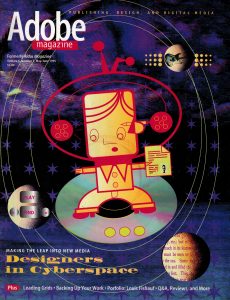
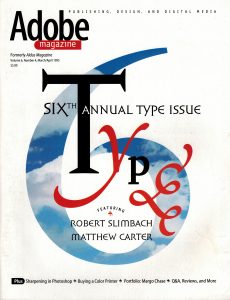
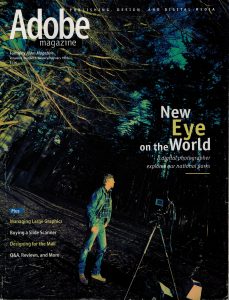
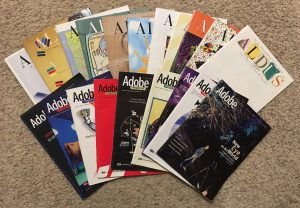

 Jon Spencer on all their records, and particularly enjoyed pointing them out on the cover of Crypt Style because they’re dressed like girls. It wasn’t a one album love affair either. She dug Extra Width and Orange as well. I purposefully left out their earliest and rawest material. As great as that stuff is, that stuff probably isn’t particularly palatable to toddlers.
Jon Spencer on all their records, and particularly enjoyed pointing them out on the cover of Crypt Style because they’re dressed like girls. It wasn’t a one album love affair either. She dug Extra Width and Orange as well. I purposefully left out their earliest and rawest material. As great as that stuff is, that stuff probably isn’t particularly palatable to toddlers.




 My last post discussed the horror of discovering my blog was dead and the troubleshooting to discover the cause was a database deleted during a power outage at one of my hosting company’s data centers. This post outlines how to bring the blog back to life in three steps.
My last post discussed the horror of discovering my blog was dead and the troubleshooting to discover the cause was a database deleted during a power outage at one of my hosting company’s data centers. This post outlines how to bring the blog back to life in three steps. This is my second post about blogging and regrettably it’s about resuscitating a flat-out dead WordPress site. The ultimate cause is the mystery disappearance of the backbone of a WordPress blog, its database. Hopefully this doesn’t happen to you, but if it does, perhaps this post, which covers diagnosing the problem, and
This is my second post about blogging and regrettably it’s about resuscitating a flat-out dead WordPress site. The ultimate cause is the mystery disappearance of the backbone of a WordPress blog, its database. Hopefully this doesn’t happen to you, but if it does, perhaps this post, which covers diagnosing the problem, and